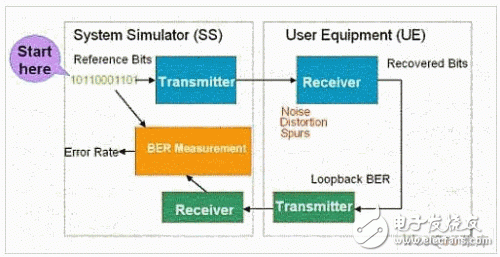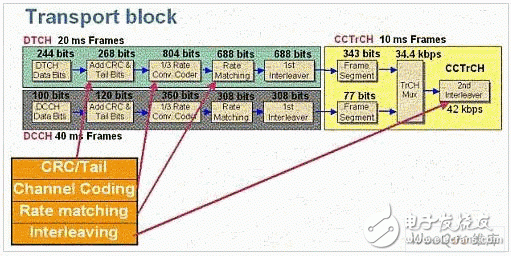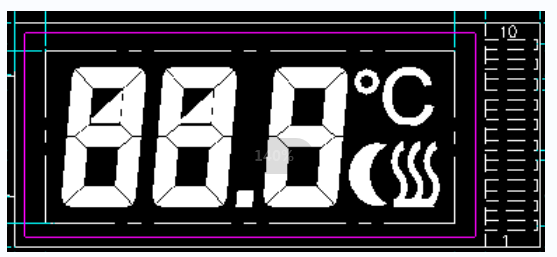33 kbps reference measurement channel for energy measurement analysis of three different WCDMA UEs
The 33 kbps Reference Measurement Channel (RMC) developed to measure the demodulator performance of WCDMA terminal equipment (UE) provides a new way to assist engineers in analyzing the various performances of the receiver in the RF frequency domain. Class performance is often obscured if a standard error correction algorithm is used. This article will measure the energy of three different WCDMA UEs and test the results.
ForewordThe world has already begun to build a third-generation (3G) mobile phone system, so it is necessary to test the terminal equipment (UE - MT mobile terminal device equivalent to 2G system) in the design phase and the manufacturing phase. One test item already specified by the 3GPP standard is the bit error rate (BER) test, which is performed through a 12.2 kbps reference measurement channel (RMC) [1, 2]. However, this test can only estimate the overall bit error performance of the UE after channel decoding, and cannot provide the necessary information for the performance of the demodulator itself. Although the performance of the demodulator is a very important part of the receiver's performance, especially in the design phase, in the current 3GPP standard, once the demodulator is integrated into the UE, it will not be used again. * Estimated. Even so, when setting the RMC of 12.2k, you can construct a new channel by making small changes on the call link. The channel will not use the error correction function on the upload link or the download link. Therefore, a loopback link can be generated to test the performance of the receiver, and RF related problems can be revealed in more detail than the general link.
How to set back the testThe block diagram of Figure 1 shows the connection between the system simulator (test set) and the UE when the backhaul test [3] is performed. The data bits generated in the test set will be represented by the number "10110001101" and will be transmitted to the UE through the 12.2 kbps reference measurement channel when the radio bearer test mode is connected, as in the reference [1, 2 Said in . The UE will solve the data bit and return the same data to the test unit. Then the test unit will compare the transmitted data with the received data, and then calculate the bit error rate.

Figure 1: The return path between the system simulator and the terminal device.
The bit error rate (BER) is defined as the ratio of the number of received error bits to the number of all data bits sent [3], which refers to the information bits of the whirling product/super decoder output. When the test unit measures the bit error rate of the returned transmission, a known data number is transmitted to the UE set to the return mode on the dedicated traffic channel (DTCH) of the downlink connection, and the UE decodes the data. And re-transmit the data on the DTCH that uploaded the link. The test crew will analyze the uploaded data to see how it matches the data bits originally sent through the downlink link. The test unit compares one transmission block of the downlink and the uploaded data at a time, and the measured result (that is, the bit error rate) is the ratio of the number of incorrect bits received to the total number of bits sent to the UE. When testing the receiver performance of the UE, it is assumed that there will be no data error in the upload link. If any error occurs in the upload link, the receiver test will be completely invalid.
The original 12.2 kbps RMC implementationFigure 2 shows how the Dedicated Physical Data Channel (DPDCH) is constructed by multiplexing the data of a DTCH and a Dedicated Control Channel (DCCH). In each 20 ms DTCH frame, 244 bits of data are generated, so the original data rate is 244 bits / 20 ms = 12.2 kbps. Then, 24 loop check codes (CRC) and tail position elements are added, and the entire data block is transferred to a 1/3 rate convoluTIonal encoder. After that, for every 804 encoded data bits, 126 bits will be punctured, leaving only 688 bits for the next stage. When the backhaul test is performed, the known test data is transmitted through the DTCH to form an RMC of 12.2 kbps.

Figure 2: Construction of the Dedicated Entity Data Channel (DPDCH).
The 3GPP standard defines two types of backhaul, as shown in Figure 3. In the first category, if the packet data is a radio bearer, the location of the return can be on the Packet Data Convergence Protocol (PDCP) layer, or if RMC is used, on the Radio Link Control (RLC) layer. . The second type of backhaul provides a method of testing the block error rate (BLER). First, the test unit transmits the transmission block and the calculated CRC to the UE, after the UE resolves the transmission block and the CRC (these two May contain errors), the same transport block and CRC will be transmitted back to the test unit via the upload link. The test unit will calculate the corresponding CRC according to the received transmission block and compare it with the data previously sent to the UE. When the two CRCs are different, it indicates that a block error has occurred. To successfully perform this type of BLER test, the test crew must be able to determine that the UE can set the size of the upload transport block to be sufficient to contain the original transport block data and CRC. Another condition for the second type of backhaul is to require the UE not to transmit the calculated CRC on the upload link, but to transmit the received data directly on the downlink link.

Figure 3: Backhaul for the first and second classes
The new 33 kbps RMC implementationReflecting Liquid Crystal Display

Reflecting Liquid Crystal Display,Electronic Instrument Displays,Electronic Watch Display,Clock Lcd Display
Dongguan Yijia Optoelectronics Co., Ltd. , http://www.everbestlcdlcm.com